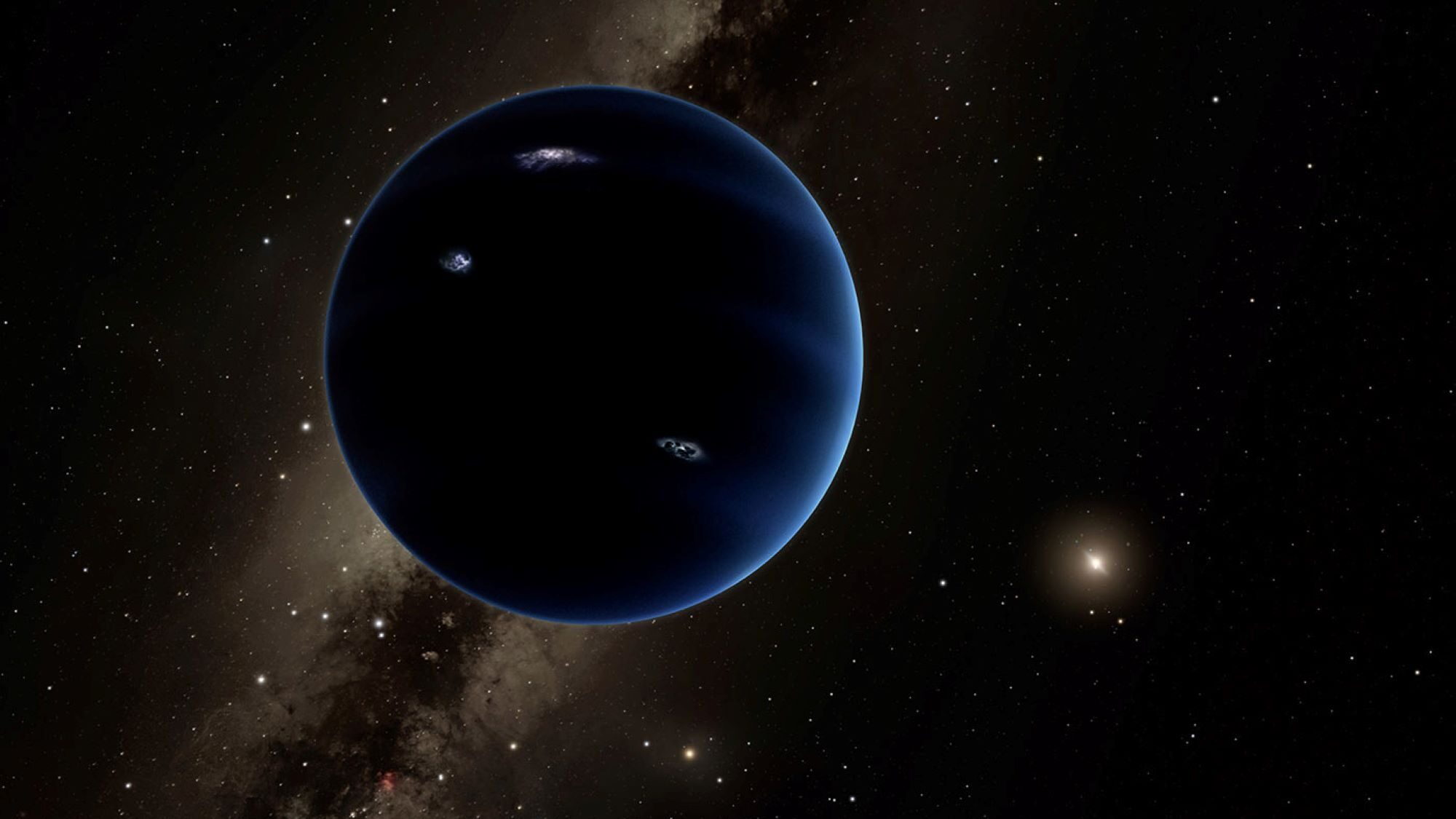

You probably learned growing up there are nine planets around the sun—or eight, after Pluto’s infamous demotion. But what if another world lurked in the distant outer reaches of our solar system?
There may be more than just comets at the solar system’s extreme edges, astronomers show in a new paper accepted to the journal MNRAS Letters. In fact, they calculate a 7 percent chance that Earth has another neighboring planet hiding in the Oort cloud, the spherical region of icy chunks and rocks where comets reside. The Oort cloud is mind-bogglingly large and far away: Its edge is tens of thousands of times farther from the sun than Earth is from our star. Around one in every 200 to 3,000 other stars likely has one of these far-out planets, too, according to the researchers’ computer simulations.
“It’s completely plausible for our solar system to have captured such an Oort cloud planet,” says Nathan Kaib, a co-author on the new work and an astronomer at the Planetary Science Institute. These hidden strangers are “a class of planets that should definitely exist but have received relatively little attention” until now, he adds.
If there’s a planet in this cloud, it’d almost definitely be an ice giant. When large planets like Jupiter, Saturn, Uranus, or Neptune form, they’re born as twins. The problem is that these hefty worlds have quite the gravitational pull, and, like quarreling siblings, often knock each other around. The nudges destabilize the young solar system, and sometimes a planet gets shoved out—either kicked out of the system entirely, or maybe exiled to the outer reaches with a few odd orbital quirks that mark its journey.
[Related: Planet Nine might not be a planet at all]
“The survivor planets have eccentric orbits, which are like the scars from their violent pasts,” says lead author Sean Raymond, researcher at the University of Bordeaux’s Astrophysics Laboratory. This means that not only would the exiled Oort cloud planet be really far from its star, its orbit would also be elongated, like a comet’s ellipse and unlike the near-perfect circle Earth follows around the sun. The immense distance is also precisely why we haven’t actually seen such a planet. If it does exist, it would be incredibly faint. “It would be extremely hard to detect,” adds Raymond.

“If a Neptune-sized planet existed in our own Oort cloud, there’s a good chance that we wouldn’t have found it yet,” agrees Malena Rice, an astronomer at MIT not involved in this work. “Amazingly, it can sometimes be easier to spot planets hundreds of light-years away than those right in our own backyard!”
Despite the difficulty, astronomers have been searching the Oort cloud (and the nearer Kuiper Belt) for decades, in the hopes of finding the elusive “hypothetical Planet X.” Planet X, also known as Planet Nine—to the chagrin of Pluto’s loyal supporters—is a Neptune-sized planet thought to orbit 60 billion miles from the sun. Caltech astronomers Mike Brown and Konstantin Batygin used observations of objects in the Kuiper Belt to infer that something as massive as a Planet X must be shepherding them into the arrangements we see, but this theory has yet to be confirmed.
[Related: This alien world could help us find Planet Nine in our own solar system]
Unfortunately, the Oort cloud planet from Raymond and team couldn’t be the same Planet X that Brown and Batygin have been hunting. Although this supposed Oort cloud planet would be far away and have a stretched-out, eccentric orbit, that’s where the similarities end. “The Oort cloud planets in our simulations would be much more distant than the proposed Planet Nine orbit—at least 10 times further away,” explains Kaib. “Our simulations cannot place planets on Planet-Nine-like orbits.”
So not one but two planets might be waiting for us to discover them in the outer solar system, plus countless others around different stars. “These results highlight just how much remains to be discovered not only in exoplanet systems, but even in our own solar system,” says Rice.
